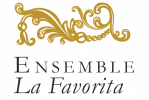La Festa Teatrale
Shepherds, nymphs, satyrs and forest creatures animate forgotten bucolic scenarios and project listeners into a magical world. Practiced in Vienna since the seventeenth century, the Festa teatrale was a great success in various European courts, often becoming the ideal genre to celebrate political-dynastic events in music and claim the ruler’s supremacy and leadership. Festivities such as weddings, coronations, ceremonies, name-days and birthdays of the emperor and empress were celebrated with stately and extravagant performances. Allegorical-mythological solutions thus became the perfect tool to mirror and amplifying the glory of the court. La Favorita guides you through a rediscovery of less-known vocal and instrumental compositions, which deserve to be heard and depict greek-roman figures in all their splendor and grace.
Lenght: ca. 60′ including moderation and a small break
Program concept: Giulia Zannin
Antonio Caldara (1670-1736)
“Sinfonia” from dramma pastorale Dafne (1719)
Johann David Heinichen (1683-1729)
Aria “Ristoratemi il cor” from serenata Zeffiro e Clori (ca.1712-1716)
Antonio Caldara (1670-1736)
Aria “Questo è il prato” from pastorale Nigella e Tirsi (1726)
Joseph Johann Fux (1660-1741)
Aria “Lascio d’esser, Ninfa si” from componimento da camera Dafne in lauro (1714)
Georg Reutter (1708-1772)
“Sinfonia” from serenata Archidamia (1722)
Francesco Bartolomeo Conti (1681-1732)
Aria “Vivi o bella” from cantata Fra queste umbrose piante (1700s)
Francesco Bartolomeo Conti (1681-1732)
Cantata “Con più luci di candori” from Cantate con Istromenti (ca. 1700s)
|
Elisabeth Hetherington– soprano |
 |